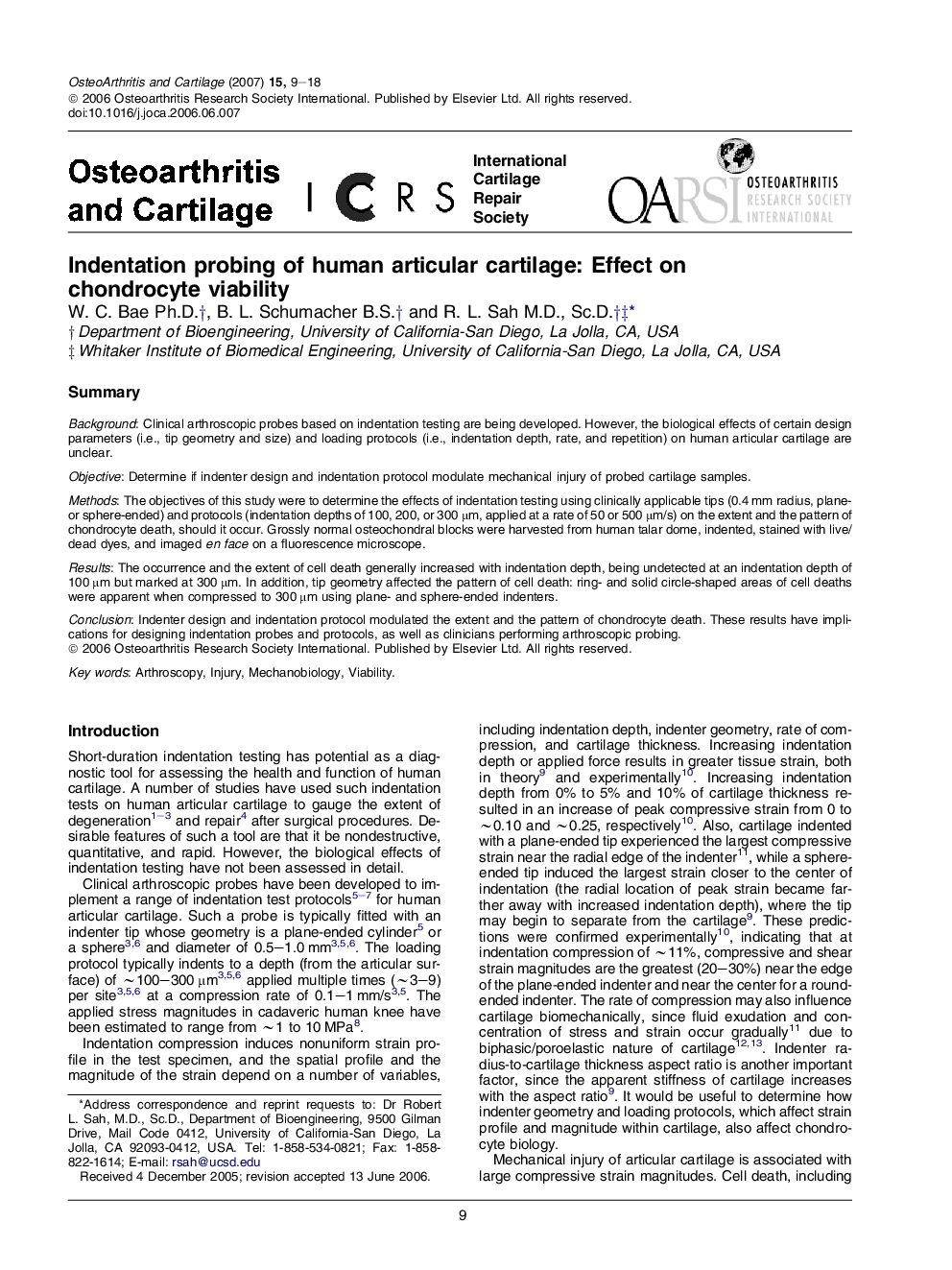| Article ID | Journal | Published Year | Pages | File Type |
|---|---|---|---|---|
| 3381862 | Osteoarthritis and Cartilage | 2007 | 10 Pages |
SummaryBackgroundClinical arthroscopic probes based on indentation testing are being developed. However, the biological effects of certain design parameters (i.e., tip geometry and size) and loading protocols (i.e., indentation depth, rate, and repetition) on human articular cartilage are unclear.ObjectiveDetermine if indenter design and indentation protocol modulate mechanical injury of probed cartilage samples.MethodsThe objectives of this study were to determine the effects of indentation testing using clinically applicable tips (0.4 mm radius, plane- or sphere-ended) and protocols (indentation depths of 100, 200, or 300 μm, applied at a rate of 50 or 500 μm/s) on the extent and the pattern of chondrocyte death, should it occur. Grossly normal osteochondral blocks were harvested from human talar dome, indented, stained with live/dead dyes, and imaged en face on a fluorescence microscope.ResultsThe occurrence and the extent of cell death generally increased with indentation depth, being undetected at an indentation depth of 100 μm but marked at 300 μm. In addition, tip geometry affected the pattern of cell death: ring- and solid circle-shaped areas of cell deaths were apparent when compressed to 300 μm using plane- and sphere-ended indenters.ConclusionIndenter design and indentation protocol modulated the extent and the pattern of chondrocyte death. These results have implications for designing indentation probes and protocols, as well as clinicians performing arthroscopic probing.
